Did you know that over 60% of 3D printing failures are directly related to improper storage of PLA wire? Thus, the way you store the PLA filament might be the difference between a great print and an unsuccessful project. Being 3D printing devotees, we all seek prints that view and operate as planned. So, to secure an outstanding and smooth printing outcome, appropriate PLA filament storage is necessary.
In today’s guide, we’ll discuss how to store 3d printer PLA filament to save your filament from environmental concerns such as temperature and humidity, confirming every spool is set for perfect printing. Accompany us as we explore the practical techniques proposed by Creality, your best pal in 3D printing technology.
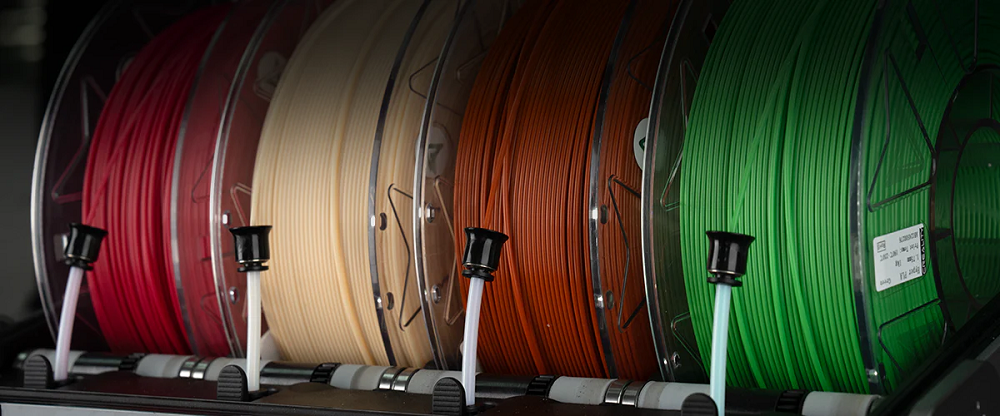
Why PLA Filament Needs Special Care?
PLA (Poly Lactic Acid) filament is a favorite option for numerous 3D printing fanatics because of its easy-to-use nature and ecological advantages.
However, the hygroscopic character of this filament makes it prone to moisture, which makes it susceptible to various storage-relevant problems.
Of course, this can influence the standard of the prints and harm the printer itself. Below is why storing PLA filament needs special care:
- Filament Brittleness: As soon as subjected to humidity, PLA filament sucks up water molecules instead of repelling them. This can cause issues in printing procedures like filament breakage, as wet filaments are mostly fragile, leading to print failures and waste matter.
- Noises: Moist PLA can generate smashing noises as steam is discharged in the printing procedure, which disturbs the stability of your print.
- Filament Appearance and Color: Dampness can create staining and disappearing of filament. Maintaining the filament dry ensures its natural color vitality and visually attractive prints.
- Print Quality: Just as PLA filament soaks up water content, it could cause printing issues like lousy layer adhesion, bubbling, and displeasing stringing. Of course, the problems will trade off the completed product's quality. So, storing PLA filament requires special attention.
Not like PETG or ABS which too take moisture but are vulnerable, PLA’s formation makes explicitly it sensitive to deterioration if not appropriately preserved.
Therefore, the two beginners and experienced professionals need to perform efficient 3D printer filament storage to save its quality.
Best Practices for Storing PLA Filament
To keep your PLA filament in the best state and prepared for use every time to require it, taking on the practical PLA filament storage techniques is crucial. Let’s discover the best way to store 3d printer filament:
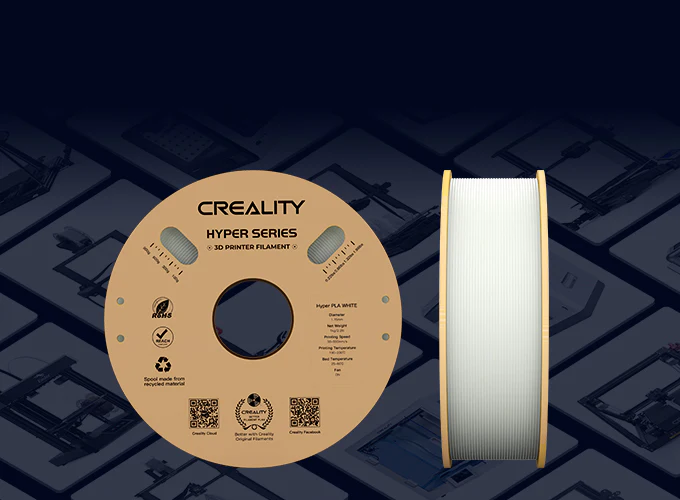
Keep It Dry
The ground rule for preserving PLA filament is to hold it back for moisture. That said, using airtight means of storage like salable bins, vacuum-sealed bags, or customized filament containers with seals can notably reduce water vulnerability.
Besides, incorporating desiccant packs like silica gel in the storage boxes will rapidly captivate any lingering dampness, protecting the filament from humidity.
Silica gel is a usual drying agent stuffed in filament boxes or any other product that has to remain dry while shipping. You can use over the same packs.
Control Temperature
PLA functions well when preserved in a chill, unchanging atmosphere. Intense temperatures, specifically heat, can provoke the filament to turn disfigured and delicate, complexing the supplying procedure into the printer and impacting print quality.
Typically, a constant storage temperature of about 20-25°C (68-77°F) is best. This is because it safeguards the filament from becoming too fragile in freezing conditions or too delicate in warm states.
Avoid Humidity
Keeping a little humidity atmosphere is essential for 3D printer filament storage. The perfect humidity level is under 20%. In case your storage space is open to too much humidity, like in tropical climates, investing in a dehumidifier can aid in sustaining a proper environment.
Also, putting moisture-sucking goods close to your filament storage can be helpful for the ones without a dehumidifier.
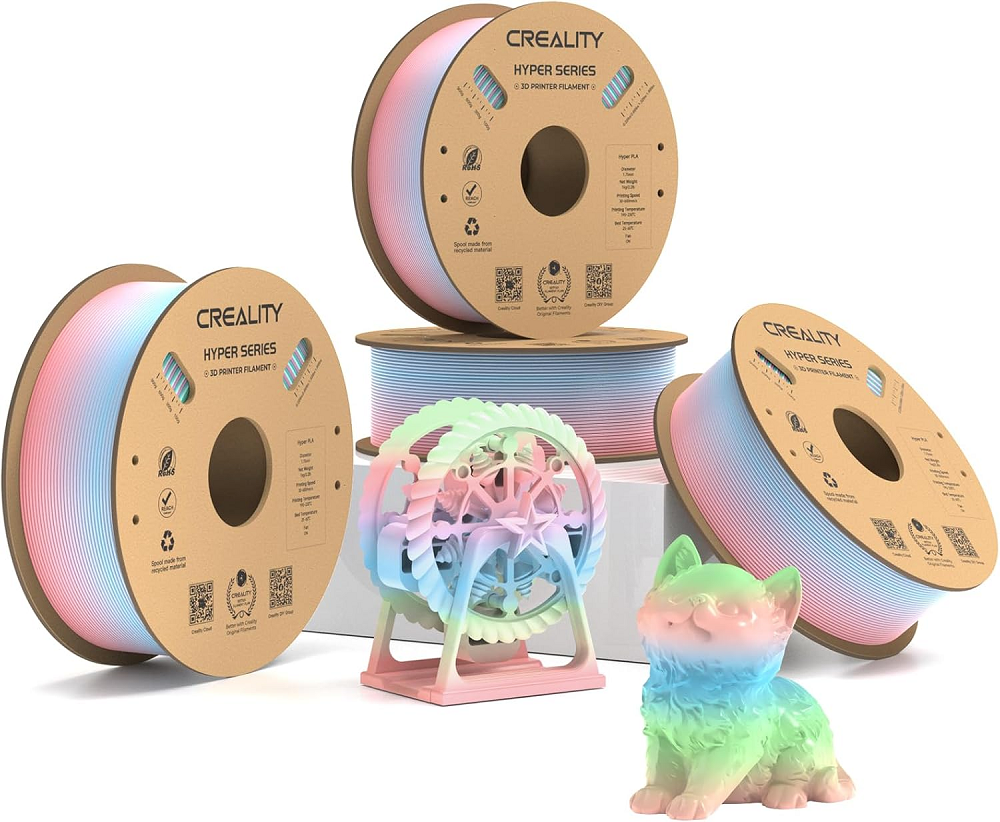
Organize Spools
The easiest way to store PLA filament is to organize the filament reels on shelves properly. This will stop them from getting twisted and impaired. The process functions well for filament storage that is less sensitive to water intake, such as PLA filament.
Organizing spools firmly and vertically, confirming the reels don’t move or drop, helps keep their perfection. That said, tag every spool with valuable data like material kind, color, and date of buy to follow the listing and usage frequency efficiently.
Leverage Creality's Expertise
When it comes to 3D print materials, Creality recognizes the complications of filament storage and provides a wide range of filaments PLA, PETG, TPU, ABS, PLA-CF, and more that appear in elegant packaging tailored to save them till they’re prepared to utilize. Every filament is designed to offer your prints exceptional qualities.
Tools and Solutions for PLA Storage
As to PLA filament storage, the two DIY and market-ready formulas can provide functional safety against ecological conditions that reduce the quality of filament.
So, selecting the correct process can considerably increase the life of your filament, guaranteeing it stays in the optimal state for superb 3D printing.
DIY Solutions
For those interested in applying profitable storage quick fixes, various DIY alternatives can be constructive:
- Vacuum-Sealed Bags: If you are genuinely looking to withhold the moisture, vacuum seal the spools. The use of vacuum-sealed bags is an easy yet worthwhile way to save PLA filament from dampness and air. When you eliminate the air from the vacuum-sealed bag, you lower the display of filament to humidity. This is necessary for keeping its quality.
- Silica Gel Setups: Another effective DIY solution for storing PLA filament is repurposing silica gels. This item is so hygroscopic that it especially sucks up all of the surrounding dampness in an area. Usually, the silica gels come up in tiny packages, but you can also buy them as beads. So, gather silica gel pouches from all product bags and put them in the filament storage boxes. The gels captivate water and are perfect for putting in storage containers where you store your filament reels.
- Airtight Tote Bins: Transform regular airtight bins into filament storage formulas by including mass silica gel packets. The bins can preserve several reels and save them from moisture, particularly if positioned in humid settings such as basements.
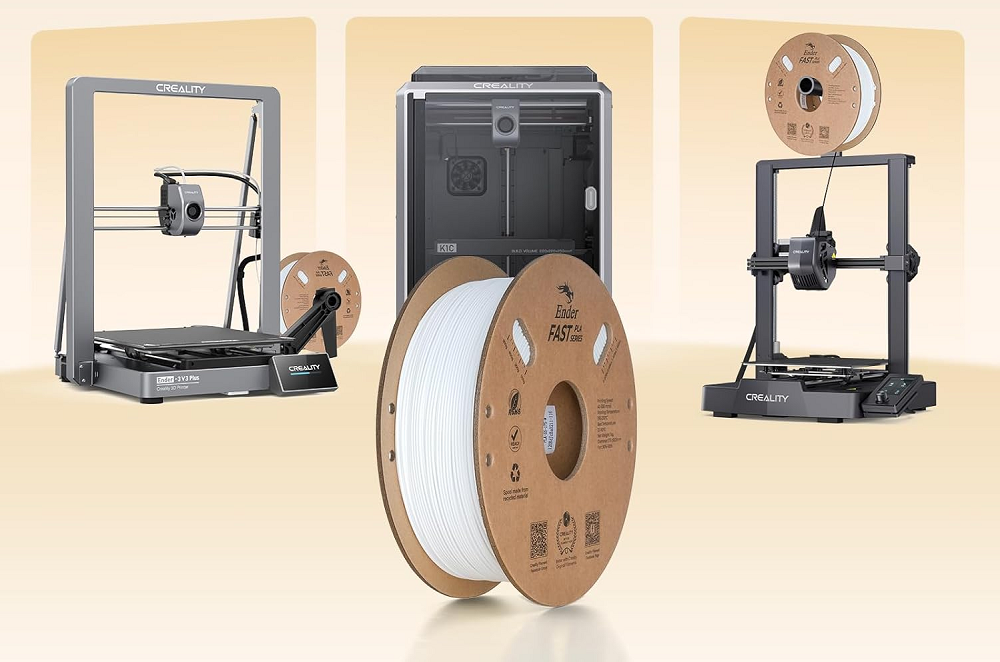
Dedicated Storage Products
Here are the dedicated storage products specially made for 3D printer filament storage:
- Filament Dry Boxes: Dry boxes containing desiccants are highly endorsed to take out little moisture. These articles are designed to offer a controlled atmosphere for the filament. That said, dry boxes maintain the filament dried-up and fill the filament straight in the printer, keeping the best state during the printing procedure.
- Creality Filament Dryer: In case your filament absorbs water, investing in a filament dryer can be a makeshift. These dryers come with advanced heating technology and fans to dry and restore filament, reviving it to the best printing conditions. That said, Creality provides a variety of filament dryers that every maker should own to enhance their 3D model’s quality and protect it from environmental concerns.
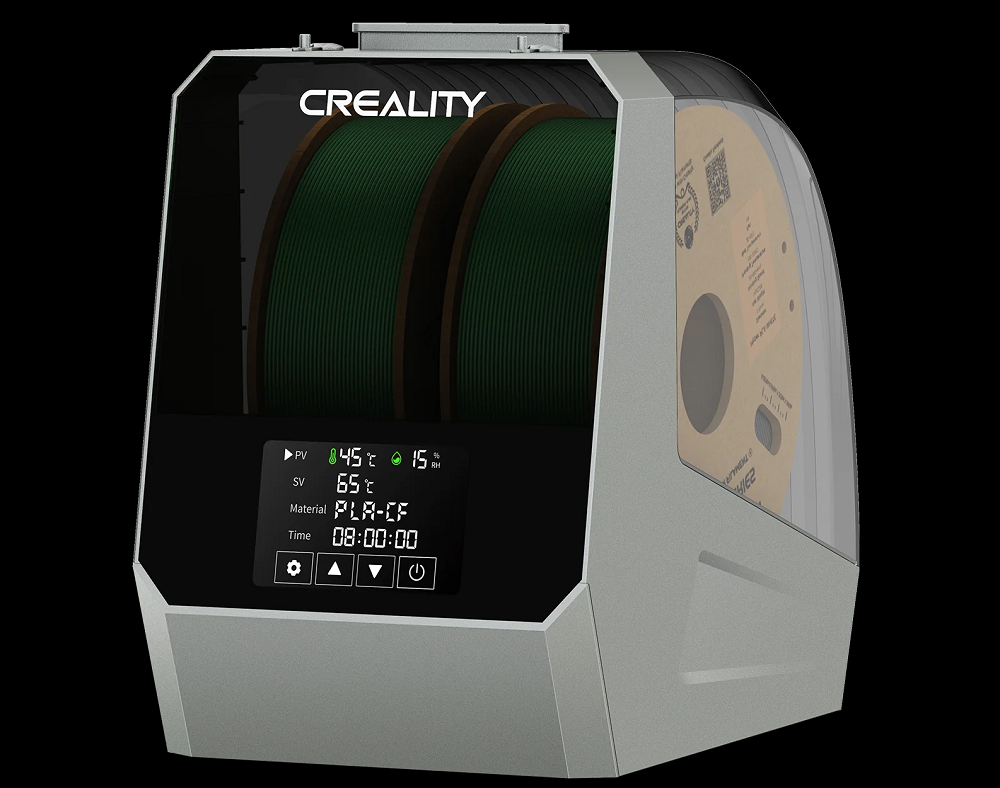
Practical Tip: A dry box can assist in several purposes past just storage. A first-rate dry box can quickly control the humidity level around safety standards for PLA filament, mostly under 20% humidity.
Common Mistakes to Avoid
The proper PLA filament storage is key to sustaining its standard and confirming the best print outcomes. Nevertheless, routine errors can compromise filament perfection and eventually influence the 3D printing tasks.
Below are the critical mistakes to keep away from:
Exposure
Among the most common mistakes in storing PLA filament is abandoning it filled in the printer for longer durations not in use.
The subjection to the surrounding atmosphere can cause the consumption of moisture, beginning the filament to turn frail and destroy with time. So, permanently remove the filament from the printer when you’re not using it.
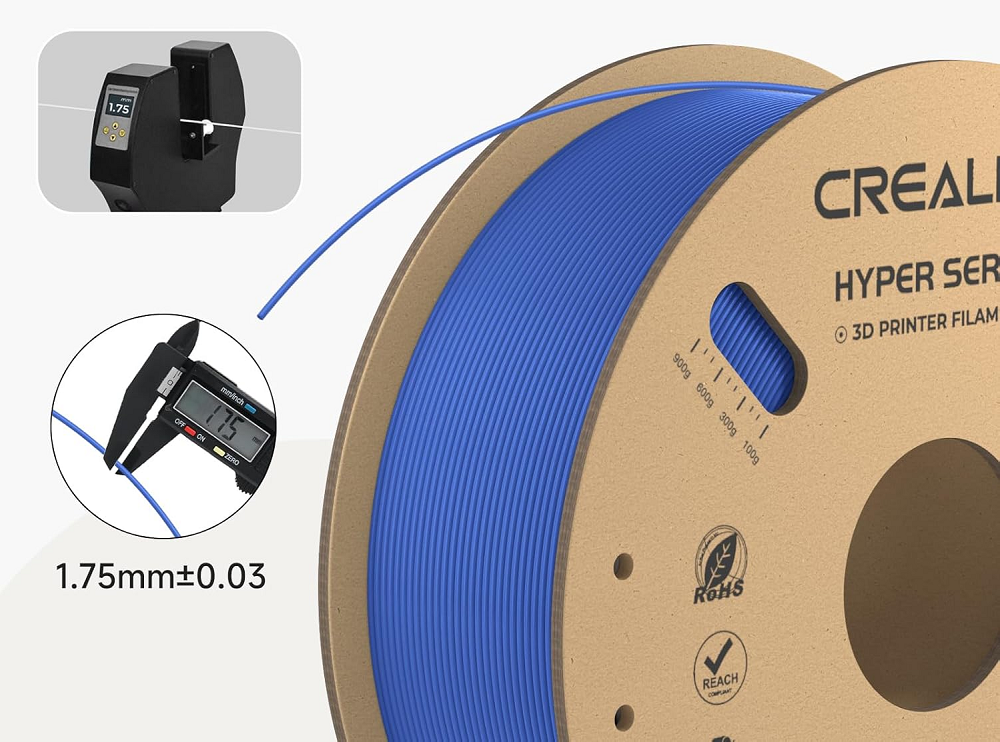
Improper Conditions
Filament storage in improper circumstances, like humid basements or garages without protection, attracts water damage. Often, these spaces possess greater humidity levels that are damaging to PLA filament.
To prevent these problems, preserve the filament in chill, dry areas where external factors can be managed or, at any rate, observed.
Pre-Print Negligence
Another frequent mistake is not examining the state of PLA filament prior to beginning a print task. Of course, it’s essential to check the filament for any symptoms of water intake, like staining or uncommon fragility.
This may specify deterioration. Moreover, checking the filament via fingers can aid in noticing any defects or debris that could impact print quality.
How to Tell If Your PLA Has Gone Bad?
To preserve the class of your 3D prints, knowing when PLA filament is degraded is necessary. There are a few signs that help you recognize if your PLA has gone bad.
Signs of Degraded Filament
Damaged filament mostly shows various sure indicators. Firstly, the filament that breaks conveniently or has a coarse touch could have penetrated excess water.
Also, any uncommon alterations in color can present deterioration, specifically when the filament is vulnerable to extra heat or light.
That said, in case the prints begin indicating incompatible extrusion, bending, or stringing extremely, the filament might have gone bad.
Quick Fix
If you observe any of the above mentioned signs in your PLA filament, you can restore it with quick fixes. Drying filament in an oven is an effective method. So, put the filament in the oven at a moderate temperature (around 40-45%) for multiple hours.
The technique can force out water yet needs diligent attention to avoid twisting or melting. A more regulated and safer way is to utilize a unique filament dryer.
These tools keep ideal air circulation and temperature to restore the filament beyond the possibility of harming it. To control filament moisture effectively, all you need is a Creality filament dryer.
Conclusion
In short, knowing how to store PLA filament is key to accomplishing top 3D printing outcomes. Appropriate filament storage ensures quality, guaranteeing perfect prints. Don’t forget to maintain your filament chill, dry, and airtight to conserve its standard.
Ready to print with ideally stored PLA?
Delve into a broad spectrum of Creality’s astonishing PLA filaments and modern storage solutions now. Explore a universe of infinite artistic possibilities and discuss your experiences with the Creality community online.
